Friday, June 30, 2006
Æ34, Sillyum in Pamphylia, Salonina, BMC 169,22
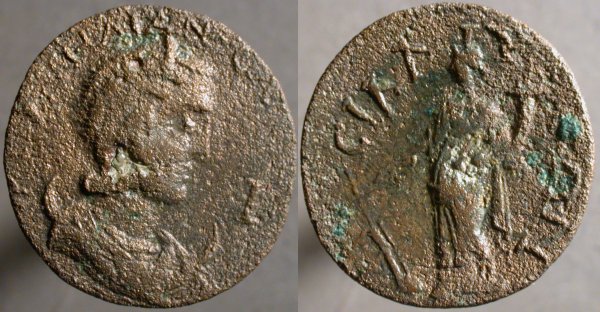
[KOP]NHΛIA CAΛ[ΩNINAN CEB], Diademed draped bust right on crescent, I before | CIΛΛ_VEΩN, Tyche standing left, holding rudder with right hand, cornucopia with left.
I think Sillyum was overcompsenating for some short-coming. The 34mm diameter is just shy of an old 38.1mm US silver dollar. That dollar needed to contaain 26.73 of .900 silver. This bronze coin had virtually no intrinsic value, but somebody wanted, I think, a larger coin than that of their neighboring cities.
Thursday, June 29, 2006
Billon antoninianus, Valerian, Rome, Göbl 72c
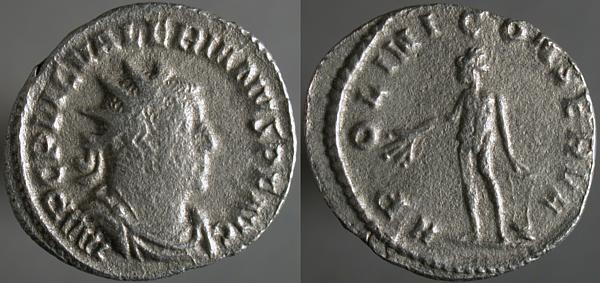
IMP C P LIC VALERIANVS P F AVG, Radiate draped cuirassed bust right | APOLINI CONSERVA, Apollo standing left, holding branch in right hand, resting left on lyre at feet.
This fairly early issue of Valerian, I'm guessing 253 or 254, shows surfaces with damage that's typical of billon with a high copper content that's been exposed to acidic soil which leaches copper out much more quickly than it does silver.
Wednesday, June 28, 2006
Æ3/4, time of Maximinus II, Antioch, Vagi 2955
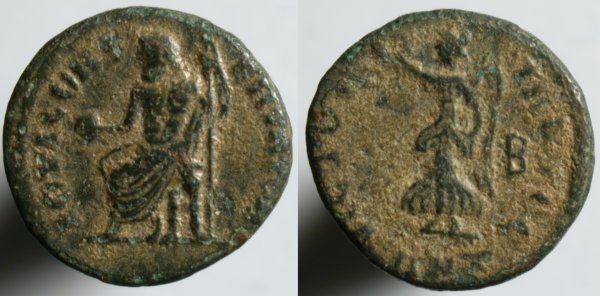
IOVI CONSERVATORI, Jove seated left, holding globe in right hand and scepter in left | VICTORIA AVGG, Victory advancing left, holding wreath om right and branch in left. ANT in exergue, B in right field.
This is one of a small series of coins issued at Antioch, under authority of Maximinus II that've been the source of some controversy. When the volume of Roman Imperial Coins covering Maximinus II was published these were omitted, as they were then assigned to Julian II. By the time the Julian II volume of R.I.C. was issued they were again omitted as they'd by then been correctly reassigned to Maximiminus II.
When David Vagi published his Coinage and History of the Roman Empire, all had been straightened out.
Even with the issuing authority established, questions remain about what these were, why they seem so different than contemporary coins. At about 15mm diameter, they're small for their time. From the officina or workshop mark, they were being issued by nine workshops at the mint. It'd seem the mint was in a hurry to produce a lot of them in a short time.
One interesting speculation has these used in a persecution of Christians, who were found out by their refusal to sacrifice to the gods, though it's unclear if these were to be used as sacrifices, to buy sacrifices, or to serve as badges indicating that a sacrifice had been made.
Tuesday, June 27, 2006
Æ28, Aezanis in Phrygia, quasi-autonomous, BMC 43
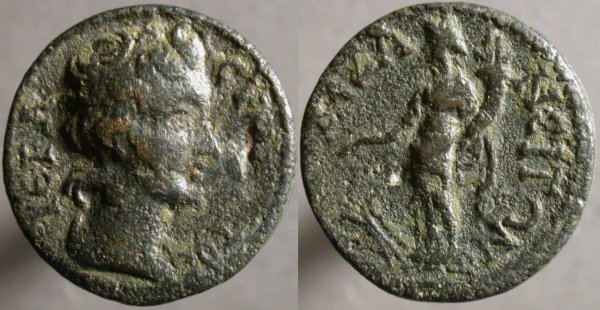
IEPA CVNKΛHTOC, Youthful head of Synkletos (Senate) right |AIZA_NEITΩN, Tyche standing left, rudder in right, cornucopia in left.
This coin of the time of Valerian and Gallienus originates in another of those annoying cities that apparently can't be clearly correlated with a place in modern geography. As I write this, I have three coins from this city, two with very high relief obverses and one with a much lower relief.
Monday, June 26, 2006
Æ as, Valerian, Rome, Göbl 38m
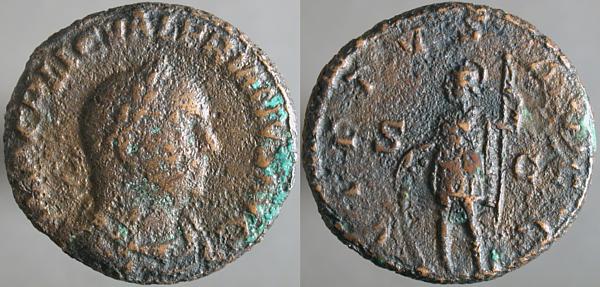
IMP C P LIC VALERIANVS AVG, Laureate draped cuirassed bust right | VIRTVS AVGG, Mars standing left, leaning on shield at feet left, holding spear in left hand. S_C across fields.
So many coins of this era are antoniniani that an example of another denomination, such as this as (tariffed at 1/32 of an antoninianus) is of interest beyond any justified by its artistry or design. The dupondius, worth 2 asses, was still produced at this time, but I've yet to obtain one.

